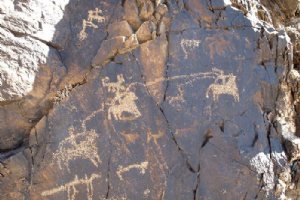The 10,000-year-old petroglyphs of Darehnagaran are a series of rock carvings located in the Sistan and Baluchestan Province of Iran. The petroglyphs depict a variety of scenes, including hunting, fishing, and farming. They are some of the oldest known examples of human art in Iran.
The petroglyphs were discovered in 1967 by a team of Iranian archaeologists. They are located in a remote area of the province, near the border with Pakistan. The petroglyphs are carved into the sandstone cliffs of a mountain range.
The petroglyphs depict a variety of scenes, including hunting, fishing, and farming. They also depict a variety of animals, including camels, goats, and deer. The petroglyphs are thought to have been created by the people who lived in the area about 10,000 years ago.
The petroglyphs of Darehnagaran are a valuable source of information about the history and culture of the people who lived in the area about 10,000 years ago. They are a reminder of the long and rich history of Iran.
Here are some additional information about the 10,000-year-old petroglyphs of Darehnagaran:
The petroglyphs are located in a remote area of the Sistan and Baluchestan Province of Iran, near the border with Pakistan.
The petroglyphs are carved into the sandstone cliffs of a mountain range.
The petroglyphs depict a variety of scenes, including hunting, fishing, and farming.
The petroglyphs are thought to have been created by the people who lived in the area about 10,000 years ago.
The petroglyphs are a valuable source of information about the history and culture of the people who lived in the area about 10,000 years ago.
The petroglyphs are a reminder of the long and rich history of Iran. “


